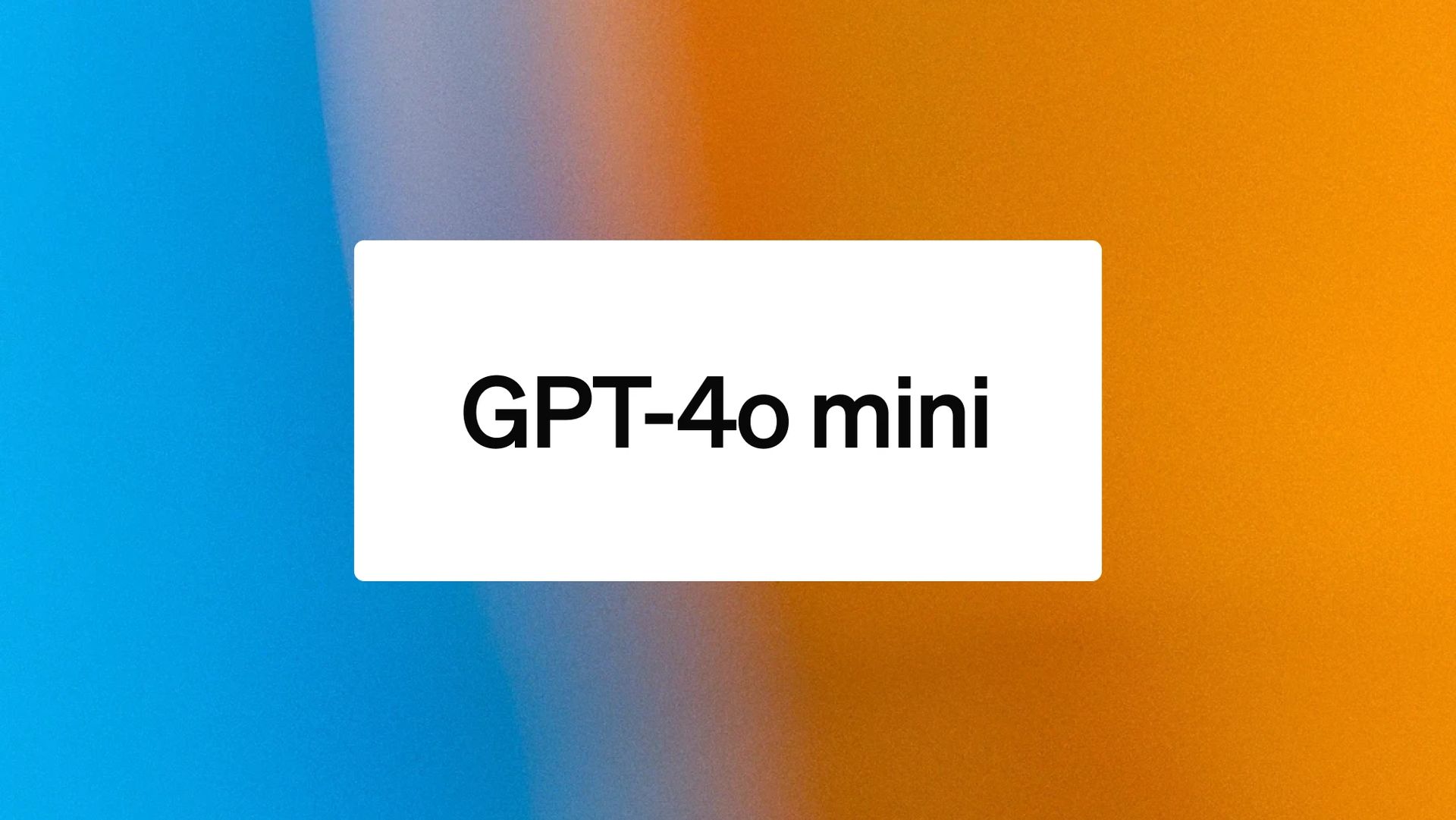GPT-4o mini is OpenAI’s latest cost-effective model that free ChatGPT will use. It aims to improve on its predecessors in terms of performance and efficiency. Plus, image generation capabilities!
While OpenAI has not disclosed the exact size of the model, GPT-4o mini is comparable to other small AI models like Claude Haiku and Gemini 1.5 Flash. We will compare them in this article to find out which one is better. But first, let’s understand what GPT-4o mini offers better.
What is GPT-4o mini?
GPT-4o mini is the latest AI model from OpenAI, designed to replace the widely used ChatGPT 3.5, which free ChatGPT uses. It offers improved performance, faster response times, and new functionalities like image generation while being more cost-effective. The model is versatile and suitable for various applications, from content creation and problem-solving to complex data analysis and code generation. Here are its improved benchmarks:
- MMLU (Massive Multitask Language Understanding): The model scored 82%, reflecting its strong reasoning capabilities across various topics.
- MGSM (Mathematics Grade School Merge): With a score of 87%, GPT-4o mini excels in mathematical reasoning, making it adept at solving logic problems and generating cod.

Good news: GPT-4o mini can generate images
GPT-4o mini can process both text and images, unlike its predecessor, ChatGPT 3.5, which was limited to text. This dual capability allows for more comprehensive and accurate information processing, enabling the model to understand and generate content from multiple sources simultaneously. So, what’s more?
GPT-4o mini delivers responses in up to 10 seconds, a significant improvement over ChatGPT 3.5’s 20-second response time. The model has a median throughput rate of 202 tokens per second, more than twice as fast as previous models, making it ideal for applications requiring quick responses.
The model can process up to 128,000 tokens at a time, equivalent to the length of an average book. This large context window ensures consistency and relevance in long interactions or when dealing with extensive documents.

GPT-4o mini API pricing is its strong side
One of the most notable aspects of GPT-4o mini is its cost-effectiveness:
- GPT-4o mini API Pricing: The model is priced at 15 cents per million input tokens and 60 cents per million output tokens. This pricing structure is 60% cheaper than GPT-3.5 Turbo, making advanced AI capabilities more accessible to a broader audience.
The reduced cost of running the new OpenAI model opens doors for wider adoption across various industries and regions, particularly benefiting small and medium-sized enterprises or developers with limited budgets. So, is GPT-4o mini powerful enough despite being cost-effective?
OpenAI models comparison: GPT-4 Turbo vs GPT-4 vs GPT-4o vs GPT-4o mini vs GPT-3.5 Turbo
First, let’s understand GPT-4o mini’s position in the OpenAI library:
| Model | Accuracy (%) | MMLU | GPQA | DROP | MGSM | MATH | HumanEval | MMMU | MathVista |
| GPT-4 Turbo | 91.0 | 56.0 | 86.0 | 93.0 | 79.0 | 93.5 | 71.0 | 61.0 | 66.0 |
| GPT-4 | 90.0 | 55.0 | 85.0 | 92.0 | 78.0 | 92.5 | 70.5 | 60.0 | 65.0 |
| GPT-4o mini | 82.0 | 40.2 | 79.7 | 87.0 | 70.2 | 87.2 | 59.4 | 56.7 | 63.8 |
| GPT-4o | 88.7 | 53.6 | 83.4 | 90.5 | 76.6 | 90.2 | 69.1 | 0.0 | 0.0 |
| GPT-3.5 Turbo | 69.8 | 30.8 | 70.2 | 56.3 | 43.1 | 68.0 | 0.0 | 0.0 | 0.0 |
The comparison of AI models reveals that GPT-4 Turbo leads with the highest overall performance, scoring 91% in accuracy, 56% in MMLU, 93.5% in MATH, and 79% in MGSM. GPT-4 follows closely, slightly trailing in most categories. GPT-4o mini, while less powerful than GPT-4 and GPT-4 Turbo, still showcases significant capabilities, particularly with a notable accuracy of 82% and strong performance in mathematical tasks (MGSM 70.2%, MATH 87.2%). GPT-4o stands out as a solid performer as well, particularly excelling in GPQA (83.4%) and DROP (90.5%). In contrast, GPT-3.5 Turbo demonstrates considerably lower performance across all metrics, highlighting the advancements made in subsequent models.
GPT-4o mini vs Gemini Flash vs Claude Haiku
Now, it’s time to compare the GPT-4o mini with its competitors:
| Model | Accuracy (%) | MMLU | GPQA | DROP | MGSM | MATH | HumanEval | MMMU | MathVista |
| Gemini Advanced | 87.0 | 52.0 | 82.0 | 90.0 | 74.0 | 90.0 | 67.0 | 57.0 | 62.0 |
| Gemini | 85.0 | 50.0 | 80.0 | 88.0 | 72.0 | 88.5 | 65.0 | 55.0 | 60.0 |
| GPT-4o mini | 82.0 | 40.2 | 79.7 | 87.0 | 70.2 | 87.2 | 59.4 | 56.7 | 63.8 |
| Claude Haiku | 73.8 | 35.7 | 78.4 | 71.7 | 40.9 | 75.9 | 50.2 | 46.4 | 0.0 |
| Gemini Flash | 77.9 | 38.6 | 78.4 | 75.5 | 40.9 | 71.5 | 56.1 | 58.4 | 0.0 |
Gemini Advanced and Gemini lead in overall performance, with Gemini Advanced scoring highest in MMLU (52%) and achieving strong results in GPQA (82%), DROP (90%), and MATH (90%). But although the new OpenAI model is close to them, they are not its natural competitors.
When we look at Claude Haiku and Gemini Flash, they have lower performance metrics. Claude Haiku particularly struggles in MGSM (40.9%) and MMMU (46.4%), and Gemini Flash shows moderate results but lacks MathVista scores.

In conclusion, GPT-4o mini presents a compelling alternative to earlier models like GPT-3.5 Turbo and newer competitors such as Claude Haiku and Gemini Flash. While not as advanced as GPT-4 Turbo or Gemini Advanced, GPT-4o mini stands out with its improved performance. Its dual capability to process text and images, coupled with a substantial context window and competitive pricing, positions it as a versatile and accessible choice for businesses and developers alike. Despite the strong competition from models like Gemini Advanced, the new OpenAI model offers a balanced mix of performance and affordability, ensuring its relevance in the ever-evolving AI landscape.
Featured image credit: Eray Eliaçık/Bing





